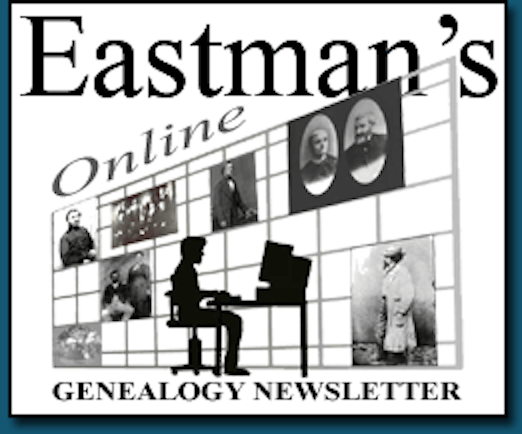
If you have French-Canadian ancestry, you probably have one, two, or perhaps a dozen filles du roi in your family tree. Several of them even have proven lines of descent from Charlemagne and a number of other royal families from throughout Europe. Obviously, that makes you a descendant of Charlemagne and other royal families.
Who were these young French women known as les filles du roi? They traveled from France to what was then called New France, now known as Québec, between 1663 and 1673 as part of a program designed to boost the population by encouraging male immigrants to settle, marry French women, and raise families.
In the early days, Québec (then called New France) was settled almost entirely by men. The early population consisted mostly of fur trappers, other adventurers, priests, and soldiers. As the years went by, farmers joined the immigrants as well. A few women did pay their own passage, but few single women wanted to leave their familiar places to move and settle in the harsh climate and conditions of New France. The lack of suitable female companionship encouraged the men of Québec to seek wives amongst the native population. The natives were mostly non-Christian, a source of concern to the many Jesuit priests who also were in Québec at the time.
As if the farmers and fur trappers didn’t have enough competition finding wives, King Louis XIV sent almost 1,200 soldiers of the Carignan-Salières regiment to Québec in 1665 to fight the Iroquois Indians, who were aggressive and killed many settlers. The soldiers were deployed at strategic points of the territory to defend the colony and its residents. The regiment was successful, and a peace treaty with the Iroquois was signed on July 10, 1667. The Regiment then returned to France but left behind 400 soldiers and officers, aged between 19 and 30, who all agreed to remain in the country as settlers. With an additional 400 young men added to the colony, the marriage problems worsened. Jean Talon, intendant of New France, carried out the colony’s first census. He recorded that the population was a bit more than 3,000, with 719 unmarried males and only 45 unmarried females living in the colony. This did not bode well for the future of the settlement.
The growth of population in the competing English colonies to the south, including married couples, also created concern among some French officials about their ability to maintain their claim in the New World.
In the custom of the day, the oldest daughter of a family in France received as large a dowry as possible from her parents to improve her chances of marriage. Dowries often included furniture, household articles, silver, land, or other inherited goods. Younger daughters of the same family typically received smaller dowries. Daughters of impoverished families often received no dowry at all, which reduced their chances of finding a suitable mate. These younger daughters were prime candidates for an opportunity in the New World.
The Intendant of New France, Jean Talon, proposed that King Louis XIV sponsor passage of at least 500 women to New France. The king agreed, and eventually nearly twice the number were recruited. They were predominantly between the ages of 12 and 25, and many had to supply a letter of reference from their parish priest before they would be chosen for emigration to New France. Research by the historical demographer Yves Landry determines that there were in total about 770 to 850 filles du roi who settled in New France between 1663 and 1673.
About 80% of the filles du roi were from the Paris, Normandy and Western regions of France. Others came from rural areas and a few were from other countries. According to the records of Marie de l’ Incarnation, who knew many of these women personally, there were among them one Moor (a black woman of African descent), one Portuguese, one German, and one Dutch woman.
 The Arrival of the French Girls at Quebec, 1667. Image is courtesy of Wikimedia.
The Arrival of the French Girls at Quebec, 1667. Image is courtesy of Wikimedia.
All were women of fine moral character, as verified by the recommendation from a priest that each woman needed to obtain before being accepted for emigration.
The King of France paid for transportation to New France of any eligible young woman. He also offered a dowry for each, to be awarded upon her marriage to a young Frenchman. Each woman’s dowry typically consisted of 1 chest, 1 taffeta kerchief, 1 ribbon for shoes, 100 needles, 1 comb, 1 spool of white thread, 1 pair of stockings, 1 pair of gloves, 1 pair of scissors, 2 knives, about 1,000 pins, 1 bonnet, 4 laces, and 2 silver livres (French coins). Many also received chickens, pigs, and other livestock. Because the King of France paid the dowries instead of the parents, these women were referred to as the “Daughters of the King,” or “Filles du roi.”
These hardy immigrant women married, often within days after their arrival in New France. The ships carrying the filles du roi would travel up the St. Lawrence River, stopping first at Québec, then at Trois-Rivières, and lastly at Montréal. Most of the filles du roi married and raised families. In fact, many of them raised large families in the tradition of the day. Many of their sons and daughters went on to also have large families, and so on and so forth for generations. As a result, millions of living people are descended from this group of pioneer women. Descendants of the filles du roi today may be found throughout Canada, the United States, and many other countries.
An alphabetical listing of all the known Filles du Roi and their husbands is available at https://fillesduroi.org/cpage.php?pt=9.
The same web site provides a lot more information about the Filles du Roi and then provides an extensive list of references to other reputable sources of information at https://fillesduroi.org/cpage.php?pt=24.
There are many other Web sites devoted to the Filles du roi. Use your favorite search engine to find them or click here for a search on Google.
Not all of the filles du roi came from impoverished families. Several appear to have been the younger daughters of rather wealthy families, including some with royal ancestry. Perhaps the best-documented royal ancestry of a filles du roi is that of Catherine de Baillon, tracing her ancestry back to Charlemagne (and before) along with connections to many other royal families throughout Europe.
A rather good description of Catherine de Baillon's ancestry back to Charlemagne may be found at: http://www.quebec.acadian-home.org/catherine-de-baillon.html and another at http://habitant.org/baillon/.
 Latest News Articles
Latest News Articles If you do not see a Plus Sign that is labeled "Add comment," you will need to upgrade to either a (FREE) Standard Edition or a (paid) Plus Edition subscription
If you do not see a Plus Sign that is labeled "Add comment," you will need to upgrade to either a (FREE) Standard Edition or a (paid) Plus Edition subscription  Do you have an RSS newsreader? You may prefer to use this newsletter's RSS feed at:
Do you have an RSS newsreader? You may prefer to use this newsletter's RSS feed at: